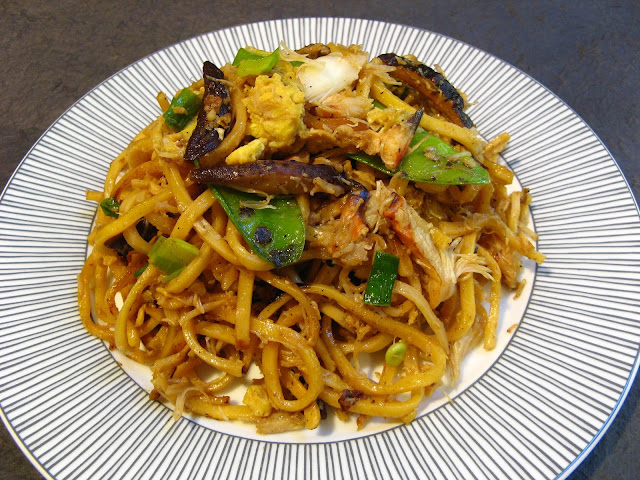As with my other enchilada recipes, Grilled
Chilpotles Chili Chicken Green Chile Enchiladas and Mexican
Pulled Pork Enchiladas, the enchiladas are made with leftovers from another
dish, in this case Carne
Adovada (Red Chile Pork Stew). For these enchiladas, I added leftover rice
to the enchilada before adding in the Carne
Adovada (Red Chile Pork Stew) filling. Serve with shredded cabbage and Pickled
Vegetables.
When I made these enchiladas, I could purchase 10-inch (25.4
cm.) flour tortillas. Now I’m unable to get that size and 8-inch (20.3 cm.)
flour tortillas are the largest currently available. This means that more (but
smaller) enchiladas will fit into a pan or alternatively you can make the same
sized enchilada out of two overlapping 8-inch tortillas. I also switched brands
of enchilada sauce to Las Palmas. Las Palmas uses chile peppers as the main
ingredient, rather than tomato sauce with chile peppers.
Enjoy!



























